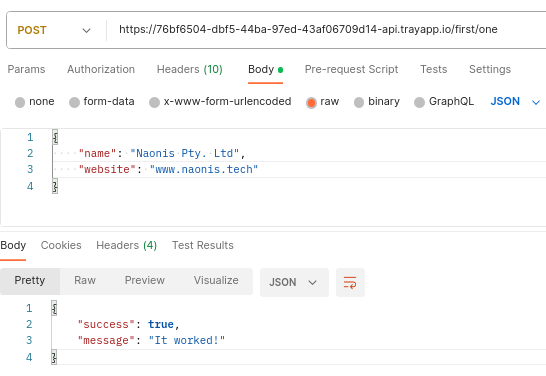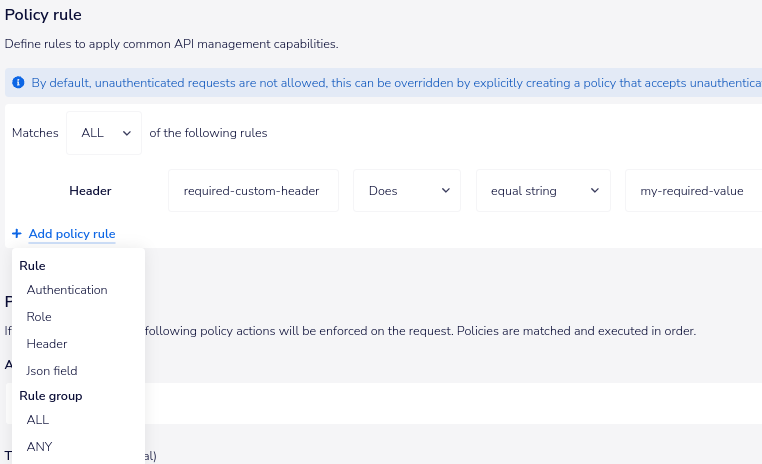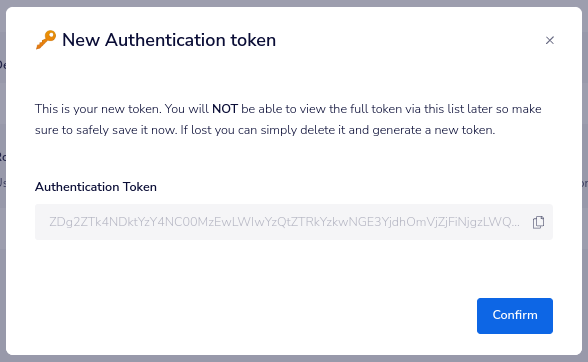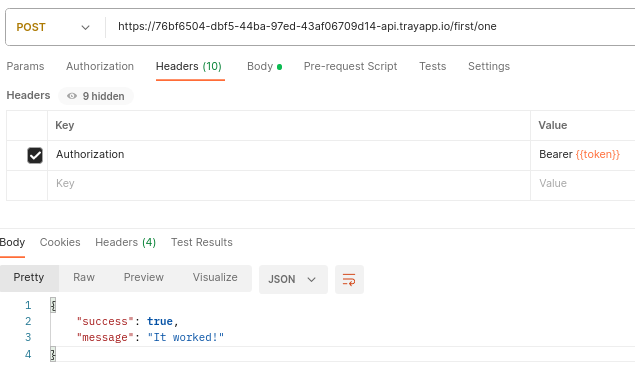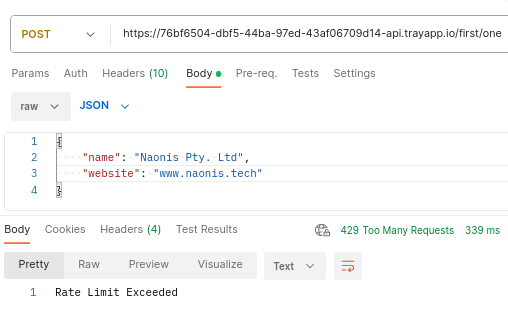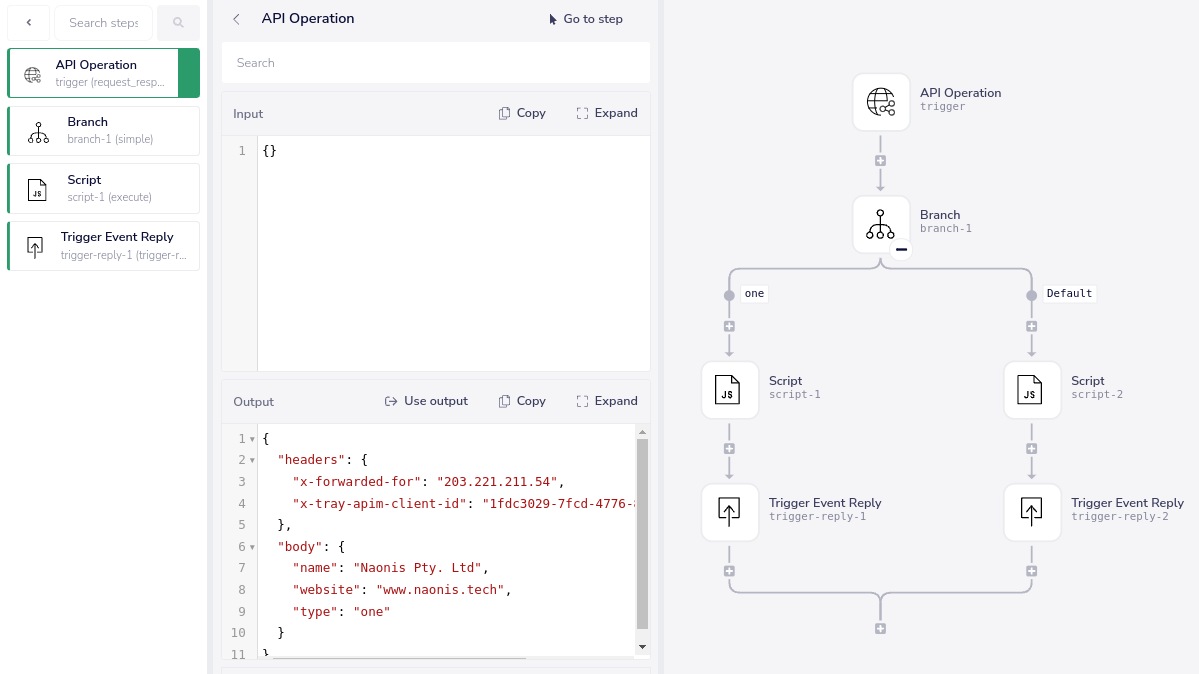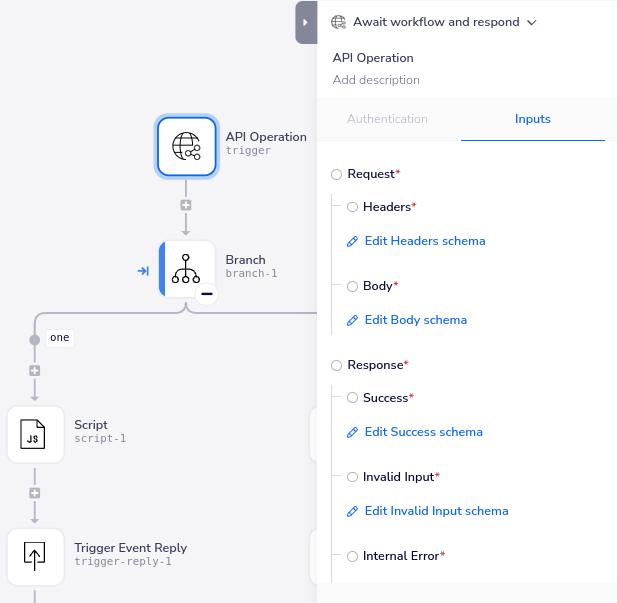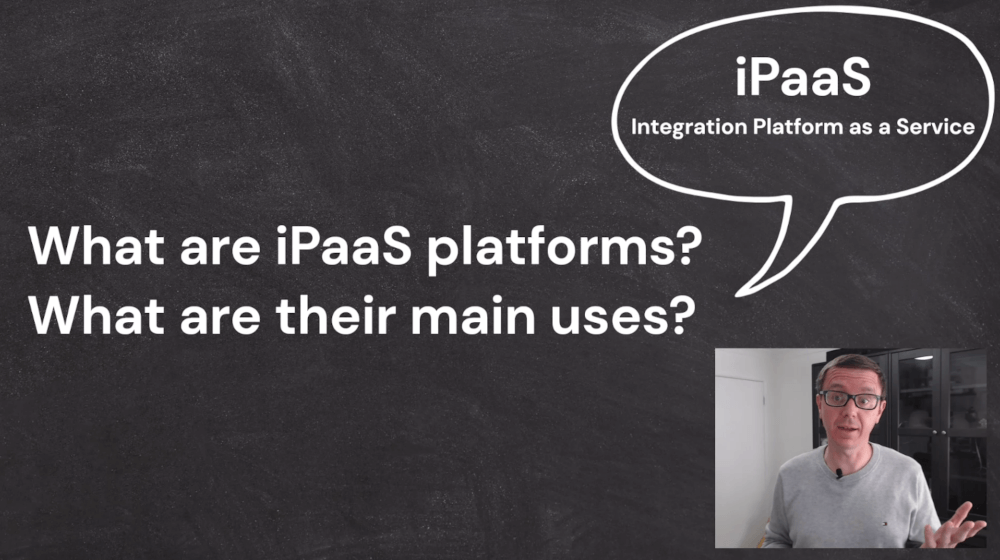Tray.io API Management
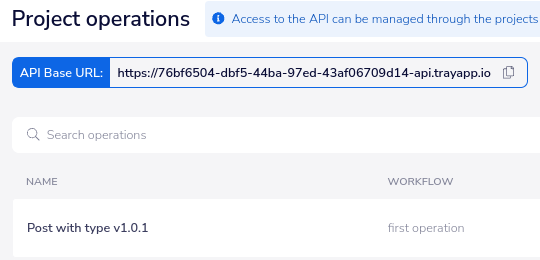
Additional operational efficiency with Tray.io API Management
Tray.io, our partner and iPaaS (Integration Platform as a Service) provider introduced its own API Management layer as part of its offering, and we could not be more excited about this news!
Learn About Our Tray.ai Services!
How can you benefit from Tray.io API Management layer?
What does this new product addition mean for your business?
Tray API Management allows the creation and deployment of entirely new REST APIs effortlessly, in an extremely scalable and secure manner.
Simply put, it means that the platform just became even more powerful, flexible and valuable to your business.
In practical terms, this means that your platform has evolved into a powerhouse, capable of transforming workflows into reusable APIs that help you reduce technical debt, help open up new business possibilities, and help propel your business forward.
This innovative capability streamlines microservice creation through no-code and optional code development, fostering seamless collaboration between developers and business teams.
Additionally, Tray.io API Management adds another versatile tool to your business toolset, complementing the robust features of Tray.io’s iPaaS.
By facilitating the reuse of orchestrated components across multiple departments, API Management accelerates turnaround times and maximizes return on investment.
In essence, Tray.io’s platform is a catalyst for innovation, enabling your organization to propel forward with agility and efficiency, while driving tangible business value at every turn.
More reuse and faster turn-around time equals quicker return on investment and increased business value!
Tray.io API Management: enhancing your business
Tray.io API Management offers a robust suite of features designed to streamline your development processes and maximize business value. Let’s explore how these features can benefit your organization:
Quick time to value on new API creation
With Tray.io API Management, you can rapidly create new APIs, reducing time-to-market for your products and services. This accelerated development process not only saves time but also enables your team to deliver tangible value to the business faster.
Learn More About Tray.ai And Our Services
Rule-based access control and policy management
Ensure the security and integrity of your APIs with comprehensive access control and policy management capabilities. Tray.io API Management empowers you to define granular access rules and enforce security policies to protect your sensitive data.
Elasticity by design
Tray.io iPaaS platform is built with elasticity in mind, allowing your infrastructure to scale seamlessly to meet growing demands. This ensures that your systems remain responsive and performant, even during periods of high traffic or resource utilization (obviously depending on all the orchestrated systems and their resource availability).
Authentication and protection
Safeguard your APIs against unauthorised access with robust authentication mechanisms and built-in security features. Tray.io API Management platform provides multiple layers of protection to keep your data secure and your systems resilient.
Data types enforcing
Maintain data integrity and consistency across your APIs with advanced data type enforcement capabilities. Tray.io API Management helps you define and enforce data schemas, ensuring that your APIs adhere to predefined input and output schemas.
Time-based rate limiting and throttling
Optimize resource utilization and prevent abuse of your APIs with configurable rate limiting and throttling settings. Tray.io API Management allows you to control the rate of incoming requests, ensuring fair access to your services while preserving system stability and protecting downstream systems from unwanted resource abuse.
By leveraging Tray.io API Management, you can empower your team to accelerate development, enhance security, and scale your operations with confidence. You can experience the benefits of comprehensive API policy management, simplified API creation, and infinite scalability—all designed to drive innovation and efficiency across your organization.
Expanded capabilities with API Management features
With features like API governance, lifecycle management, and native elastic scalability, teams can deploy APIs confidently and scale effortlessly.
By adding the API Management layer, the Tray.io platform focuses even more on business composability. Leveraging the right SaaS application for their specific tasks, and orchestrating systems together.
Task-based usage pricing ensures affordability, predictability and flexibility for enterprises.
Contact Us About Tray.ai Services!
How does API Management work?
Overall it is a pretty simple three steps concept:
- The Workflows contain the business and system orchestration logic
- The Operations define the base API URL, which workflow to call, the API method and the path the API will respond to
- The Access controls define the permission of the API at a granular level
Can we have more practical details?
Ok, let’s dig a little deeper into the three aspects above:
- Workflows are triggered with a new trigger type called: “API Operation”. To leverage a workflow in a Tray.io API, it has to start with an “API Operation” trigger
- Operations (as in API endpoints) are defined under the “Operations” section. There it is possible to define their method or HTTP verb, their URI or path, and the Workflow that the Operation should trigger. The Operations section contains also the base URL for the API
- Access control can define Clients (basically the API tokens), Roles and Policies. Policies can specify extremely granularly which Operations are affected by which Policy, what should match in terms of HTTP headers, authentication, Tray Roles, JSON fields etc. It is even possible to set up request throttling based on timeframes in elapsed minutes, hours and days or a combination of all three timeframes.
Example use-cases
Data enrichment
Imagine a set of APIs for lead and business enrichment, email discovery, verification and routing.
Support tickets augmentation
Or imagine support tickets augmentation, summarization, sentiment analysis and proposal of relevant answers, all behind a single API call, which all your business systems can consume.
External data visualization within your CRM
Or imagine an API consumed by your CRM, to visualize within your CRM, analytics data that comes from your ERP or accounting software.
Metrics and KPI dashboards
Or even imagine an internal dashboard that shows all employees this month’s KPIs for the business, with data derived from several different sources.
For example, the dashboard could surface:
- this month’s billing
- churn rate
- acquired customer/users
- outstanding payments
- productivity
- sales quota and opportunities closed
- leads generated
- current Customer Lifetime Value (CLV)
- etc.
All this information could be shown throughout your offices, on an intranet page, leveraging an internal simple front-end based application that calls multiple Tray.io APIs.
Final considerations
While Tray.io’s API Management is a new addition to Tray.io, it is a very powerful new tool at your disposal. A new and game changing possibility.
Now you can orchestrate multiple systems together, to either complete actions by pushing data to new API endpoints or retrieve data from multiple different sources at the same time.
With this low-code approach to API creation, Tray.io allows you to reduce the need for custom code, when there is the need to develop special services from within your business.
It can now all be a reality today, with Tray.io.
Do you want to know more about Tray.io automation and API Management capabilities?
Whether you are already a Tray.io customer or you are considering our services for the first time, we are here to help you amplify your business with our consulting, implementation and development services.
If you are already a Tray.io customer and believe we could further assist you, reach out now!
And if you are not a Tray.io customer, let’s start a conversation. We will discuss your current business pain points and explore how automation, integration and API Management can increase efficiency within your business!
Tray.io API Management FAQ
What are the key benefits of Tray.io API Management?
Tray.io API Management empowers your business by enabling the effortless creation and deployment of new REST APIs.
This streamlined process enhances scalability and security, transforming workflows into reusable APIs that reduce technical debt, open up new business possibilities, and propel your organization forward.
How does Tray.io API Management facilitate collaboration between developers and business teams?
Tray.io API Management streamlines microservice creation through a combination of no-code and optional code development, fostering seamless collaboration between developers and business teams.
This innovative capability accelerates turnaround times, maximizes return on investment, and drives tangible business value.
What are the practical details of using Tray.io API Management?
Tray.io API Management operates through a simple three-step concept.
-
Workflows, triggered with the ‘API Operation’ trigger, contain business and system orchestration logic.
-
Operations, defined under the ‘Operations’ section, specify API endpoints, methods, URIs, and the associated workflows.
-
Access controls, including Clients, Roles, and Policies, ensure granular permission management and request throttling.
Can you provide examples of use-cases for Tray.io API Management?
Tray.io API Management enables a variety of use-cases, such as data enrichment, support ticket augmentation, automation of complex processes such as HR, external data visualization within CRM systems, and metrics/KPI dashboards.
For instance, imagine leveraging Tray.io APIs to:
- enrich and route leads to the least busy sales rep
- gather leads conversion rates by sales rep by industry or vertical
- summarize support tickets
- visualize analytics data in your CRM
- streamline HR processes by automating employee onboarding, performance evaluations, and training program enrollment
- or create internal dashboards displaying key business metrics
Might also be interesting
An introduction to Tray.io
Have you heard about Tray.io? Curious to learn more? We have just the content for you!
Increase ROI with reusable iPaaS components for automation
Do you know what is the killer iPaaS app based on what we are doing?
Effective systems integration for Mergers and Acquisitions
Acquisitions. Mergers.
When your company doubles its systems overnight, it can feel overwhelming.
Tray.ai implementation and consulting
Improve your business efficiency with our Tray.ai implementation and consulting services. Our expert team ensures seamless integration and business process automation solutions with Tray.ai, optimizing efficiency and maximizing outcomes.
Discover our tailored solutions for effective workflow automation and system integration of your current systems.
All trademarks mentioned on this page are the property of their respective owners. The mention of any company, product or service does not imply their endorsement.


